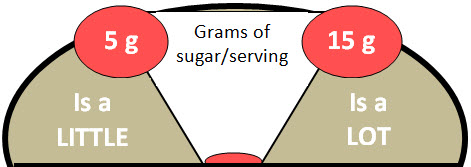Sugar Sugar Everywhere – What’s healthy to eat?
Sugar, especially added sugar has been under fire for its association with health issues including heart disease, diabetes, dental cavities and obesity. Added sugars are sugars and syrups that are added to foods or beverages. The Heart and Stroke Foundation recommends limiting added sugars to a maximum of 10% of total calories in a day. For an average 2,000 calorie diet, 10% is about 48 grams or 12 teaspoons of added sugars a day. Health Canada has set the % Daily Value (%DV) at 100 grams for total sugars per day which includes all added sugars plus naturally occurring sugars.
Here’s our expert dietitian advice:
1. Read the Nutrition Facts table.
Foods with 5 grams or less sugar per serving would be considered to have “a little” sugar whereas foods with 15 grams or more sugar per serving would be considered to have “a lot” of sugar.
2. Read the ingredients list.
Look for ingredients that indicate sugar such as molasses, agave, fruit juice concentrate, honey, syrup, or end in ‘ose’ (e.g. dextrose, glucose, fructose, maltose, sucrose). By 2021, different sugars will be shown individually and grouped together as “Sugars”.
3. Look at the whole food.
Natural or added sugars are still sugars & contain 4 calories per gram. Just because a food has little or no sugar doesn’t mean that it is a healthy or nutritious choice. Choose wholesome, foods for maximum overall nutrition.
Questions? Contact us to discuss how the new sugar labelling laws impact your health and wellness or business communication.
